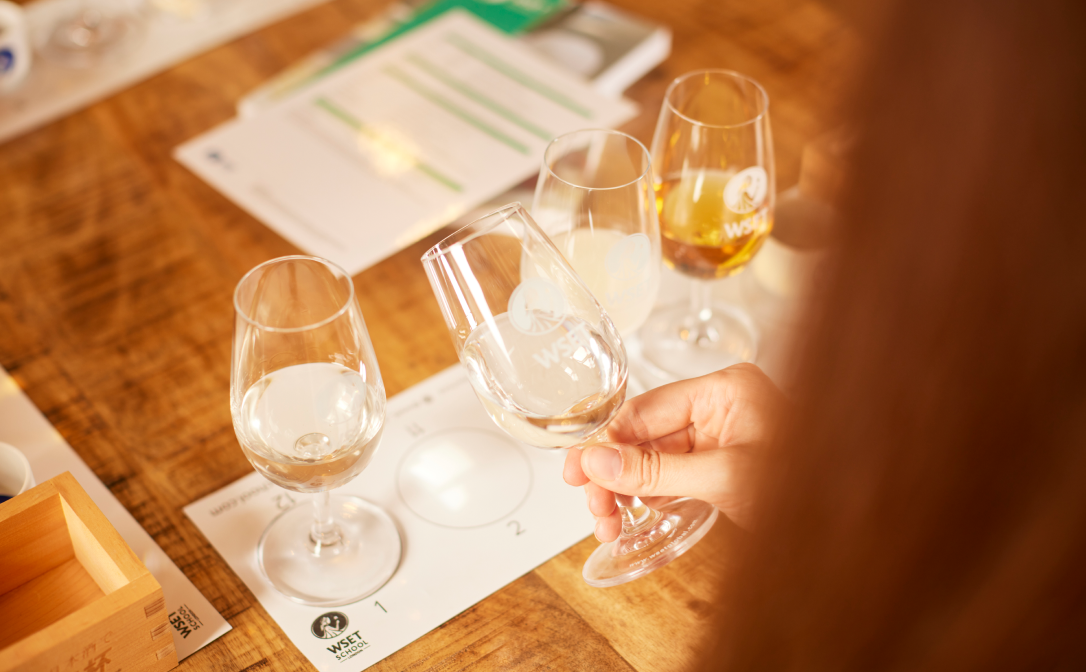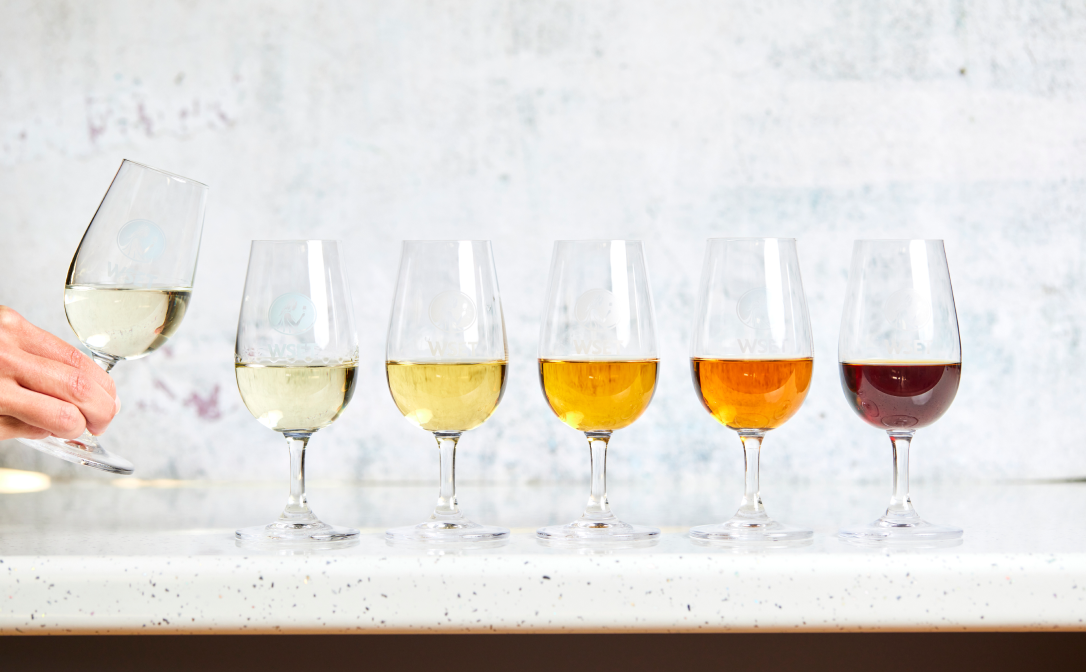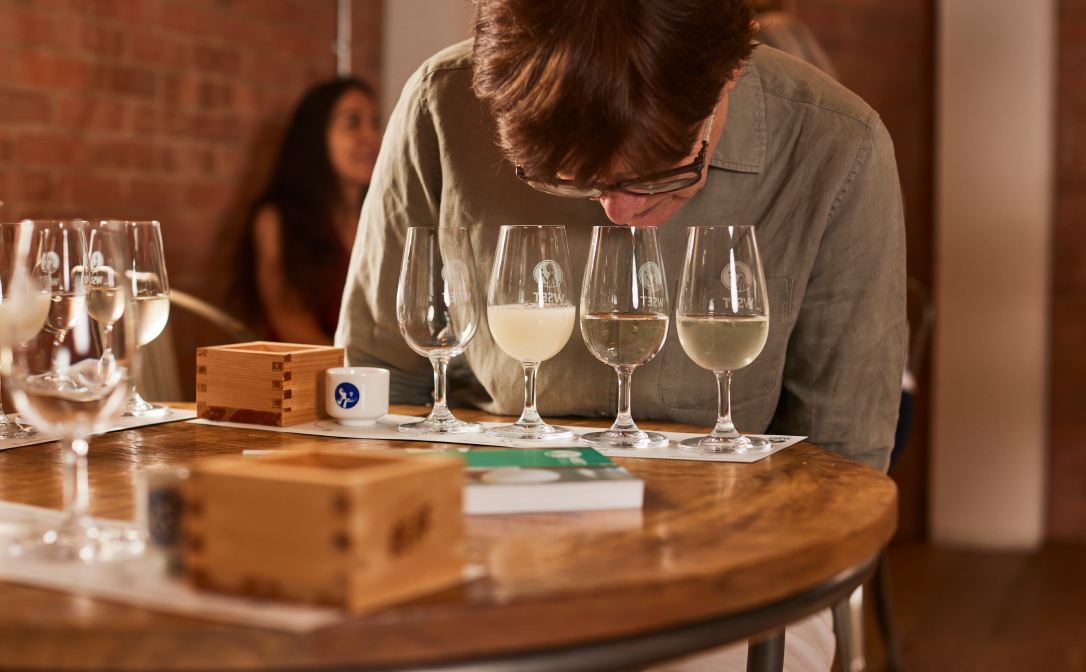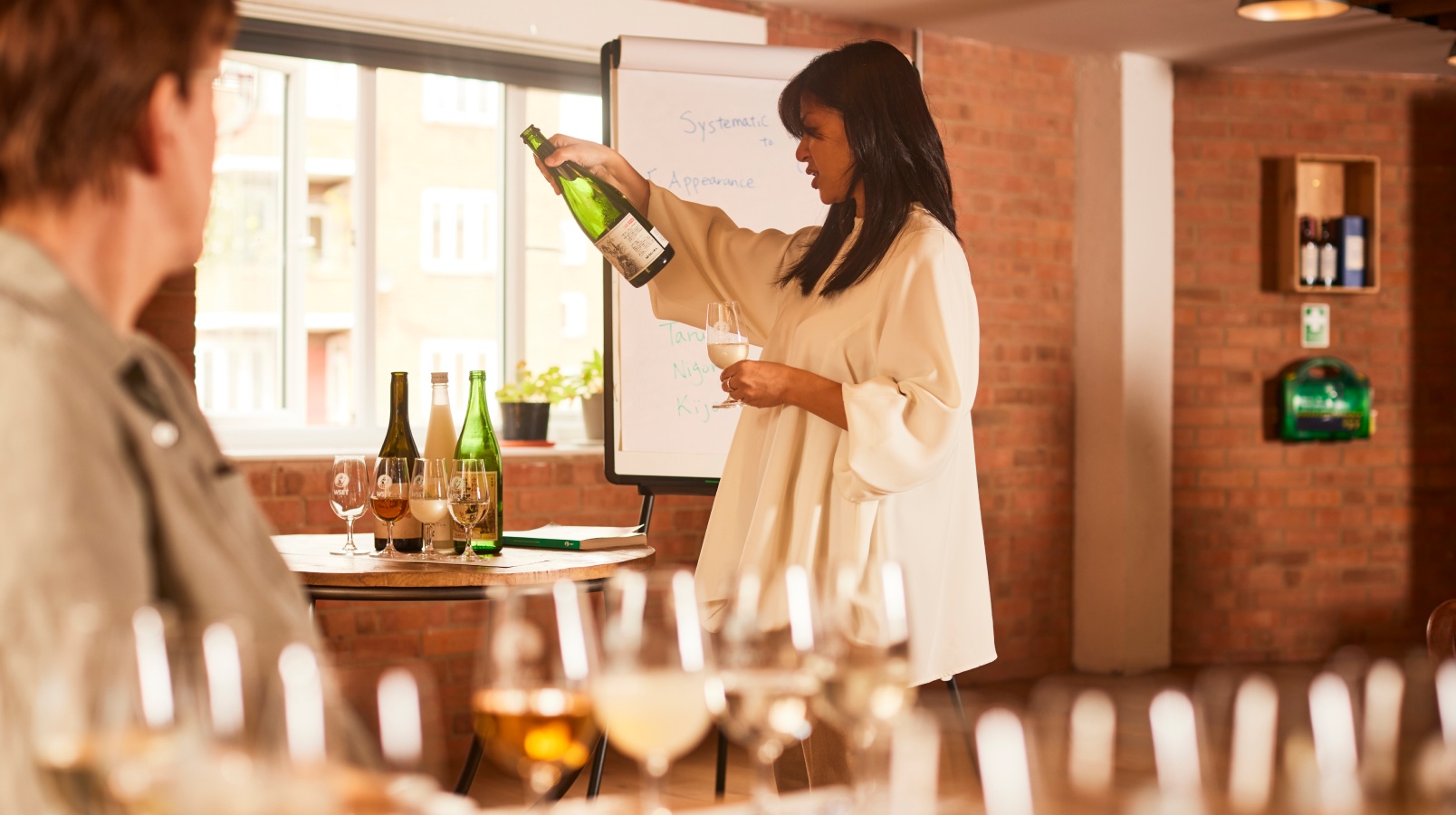Natsuki Kikuya has spent the past decade working tirelessly to educate the world about the diverse and elegant flavours of Japan’s national drink.
In 2014, she welcomed the very first cohort of sake students to the WSET’s flagship school in London. It was a proud moment for Natsuki, who had teamed up with Antony Moss MW to develop and launch the WSET Level 3 Award in Sake.
Since then, more than 17,000 people across the globe have taken a WSET sake qualification, with most coming from Japan, the UK, the USA and Hong Kong. She has helped to train 160 WSET educators around the world, and they are now busy explaining the manifold wonders of sake to students in many different languages.
The Japanese government awarded Natsuki the prestigious “Sake Samurai” title in 2015. The following year, she oversaw the launch of the WSET Level 1 Award in Sake, a one-day course aimed at beginners. By contrast, the Level 3 Award is an advanced qualification that teaches students how to accurately assess different sakes and make authoritative recommendations.
Eight years later, the WSET is now gearing up to launch a Level 2 Award in Sake, which bridges the gap between the existing two courses. “The Level 2 Award in Sake is ideal for both drinks trade professionals and enthusiasts who would like to gain an in-depth understanding of the production of sake and its different styles,” says Natsuki.
The course will be available from 21 providers in eight countries from this April, following pilots conducted in Japan, the USA and the UK. Natsuki is hosting the first Level 2 course at WSET’s London school from 15-17 April.

A family affair
Natsuki’s family has been brewing sake in Akita Prefecture since 1656. However, she did not have much to do with the family business while growing up, as she was raised in Tokyo, 400 miles south of the brewery.
It was only in 2008, when her beloved grandfather fell ill, that she began to take an interest in sake. He was the latest in a long line of brewers, and she was impressed by his passion for the drink.
“I realised that I had never thought about my roots,” says Natsuki. “My grandfather was so proud of his sake. He would be upset if we went to a restaurant and the family’s sake was not listed. His knowledge is something special, which has been passed down over centuries. I thought about what would happen to that legacy if someone didn’t take the helm.”
At the time, Natsuki was working in one of Tokyo’s many office blocks. She had studied in the USA before returning to Japan to embark upon a corporate career.
However, after falling in love with the diverse and wondrous flavours of sake, she decided to abandon that career. Instead, she began working at Hasegawa Saketen, a famous sake store with branches across Japan, which allowed her to rapidly expand her knowledge.
Made in Japan, exported around the world
Natsuki discovered that domestic sales had been falling for several decades. “After World War II, Japan experienced an economic bubble, and the Japanese embraced the western culture. People started drinking more beer, wine, fruit liqueurs and cocktails. Sake was seen as an unfashionable drink for older generations.”
That is now starting slowly to change slowly, as younger adults in Japan are rediscovering a thirst for sake after visiting specialist bars and Michelin starred restaurants. However, at the time, exports seemed to offer the best opportunity to reignite the sake industry.
In 2009, Natsuki left her homeland to begin her mission to educate the world about sake. She landed a job as the sake sommelier at Zuma, a Japanese restaurant in London. After two years at the restaurant, she became the head sake sommelier at Roka – which has branches in London and Dubai – in September 2011.
She enjoyed her work, but she grew concerned by the lack of high-quality sake courses for anyone interested in broadening their knowledge.
“There wasn’t much education available to make myself a ‘sake sommelier’,” says Natsuki. “Guests at the restaurant would ask why certain production methods are followed, or where certain flavours of sake come from, and I would have to call master brewers running sake breweries back home to find out. They often said they didn’t know. They just did what their previous master brewers did, and they said that’s the way it has always been.”
Natsuki decided to travel the length and breadth of Japan, visiting as many breweries as possible and asking incessant questions, in a bid to uncover the secrets of sake. She ultimately became an expert, before working with the WSET and the National Research Institute of Brewing in Japan, who shared their expertise, to establish the first sake course in 2013. A year later, she was teaching the inaugural class of the WSET Level 3 Award in Sake to students in London, and she has never looked back.

Sake sales soar in international markets
When Natsuki began compiling the first WSET sake course, exports accounted for just 3% of sales. The export market was worth ¥8.9 billion ($60 million) back then, but she saw the potential for growth.
Export sales have increased exponentially over the past decade, as drinkers in the USA, Canada, Australia, the UK, China, Hong Kong, Singapore and other markets have developed a growing fondness for Japan’s national drink. Its ascent has been driven by better education, a rise in the popularity of Japanese cuisine and an enduring infatuation with Japanese culture.
Export sales now account for 7% of Japan’s sake production. With domestic consumption declining, producers are ramping up their focus on international markets. Sake sales in the United States have increased by 235% over the past decade, according to official figures from the Japan Sake and Shochu Makers Association. That makes it the second largest export market, behind only China.
Similar levels of growth have been achieved in Canada and the UK, up 270% and 251% respectively in the past decade. Elsewhere, exports to Australia have increased by 304%, while similar growth can be seen in New Zealand, the Nordics and various parts of Asia.
Total sake exports reached ¥41.1 billion ($280 million) in 2023, having quadrupled over the past 10 years.
WSET Level 2 Award in Sake can inspire people around the world
It is against this backdrop that WSET is launching the Level 2 Award in Sake. “Globally, sake continues to be an exciting category,” says WSET CEO Michelle Brampton. “We have seen demand for our Level 1 Award in Sake grow significantly over the last five years, so we are delighted to be launching the new Level 2 Award in Sake. It is designed to inspire more people around the world to deepen their knowledge of sake, whether they work in the trade or are learning for pleasure.”
The course breaks down the brewing process and explains how the ingredients are combined to create different styles of sake. Students will also learn how to describe and assess the quality of the various sakes they taste.
“Level 1 is entry-level, whereas Level 2 will allow you to really dive into the history of this category,” says Natsuki. “There will be 20 samples over two days, and students will learn about the different rice varieties, the different polishing methods, the ingredients used to make sake, the main techniques that are used and common labelling terms.”

She believes it will be an enjoyable and informative course for sake enthusiasts around the world. There is also a commercial incentive for drinks trade professionals to take the course, as the sake boom shows no signs of abating.
Sake encompasses Japanese culture
When asked why she is so passionate about sake, Natsuki’s eyes light up. “Every bottle of sake encompasses so much of Japanese culture, history, tradition, food, nature and geography,” she says. “Sake is linked to Japanese culture in many ways and expresses the beauty of nature, the Japanese traditions and the whole Japanese spirit.”
Whereas the best wines often have a long, complex finish, some of the best sake expressions have a short, clean kire finish “It’s about subtraction and purity,” says Natsuki.
Sake has been brewed in Japan for more than 2,500 years, using just four natural ingredients native to the archipelago: rice, water, koji and yeast. “Rice has always been at the centre of our diet, playing an essential role for the Japanese food culture,” says Natsuki. “Sake works well with a wide range of food.”
She particularly enjoys pairing sake with oysters and with cheese. “Sake really goes perfectly with oysters. We have done tastings at restaurants where oysters were paired with sake, wine and Champagne, and in the end, everyone voted for sake.
“Sake goes really well with cheese too. It has around a fifth of the acidity of wine, but one of the main acids is lactic acid, and that goes wonderfully with cheese. Sake can also elevate the umami flavours in food, and it pairs very well with oily fish.”
Diners around the world are beginning to share in her appreciation for this versatile drink. Most sake is still sold at Japanese restaurants, but some Michelin starred restaurants have started pairing sake with certain courses when running tasting menus, as sommeliers know it can provide a compelling alternative to wine.
Natsuki says that watching people discover the delights of sake over the past decade has been “an incredible journey”. However, there is still a lot of work to do, and she is excited to begin welcoming Level 2 sake students in the months and years ahead. “This new Level 2 sake qualification will enable us to reach even more people,” she says.


